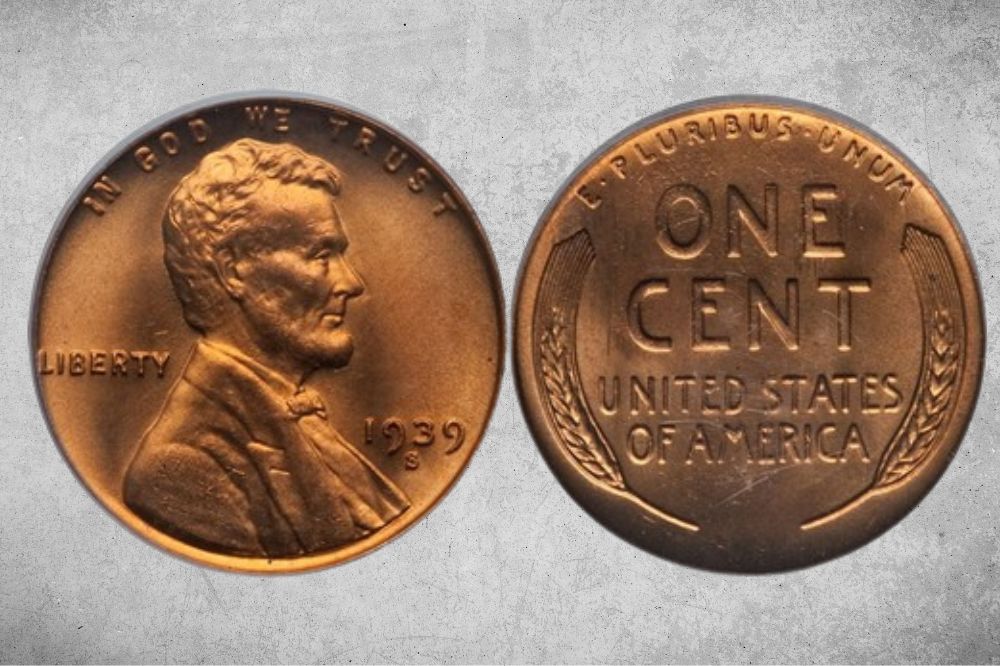The penny has a long history in the United States coinage, but it is not the most valuable coin on the market. Also called the Lincoln penny or the wheat penny, this coin attracts collectors when it is in a well-preserved state.
There is not much difference between the 1939 penny and others within the same series. And because there are many of them, it is not particularly sought-after, although it is one of the best-looking pennies in the coinage of the country. So, what is the actual value of the 1939 penny?
We will look at the details and varieties, and create a value chart to explore every aspect of the coin. That way, you can determine the value of the penny in your possession and see how much it can get, especially if it has a mint mark and is in a mint state.
1939 Penny Details
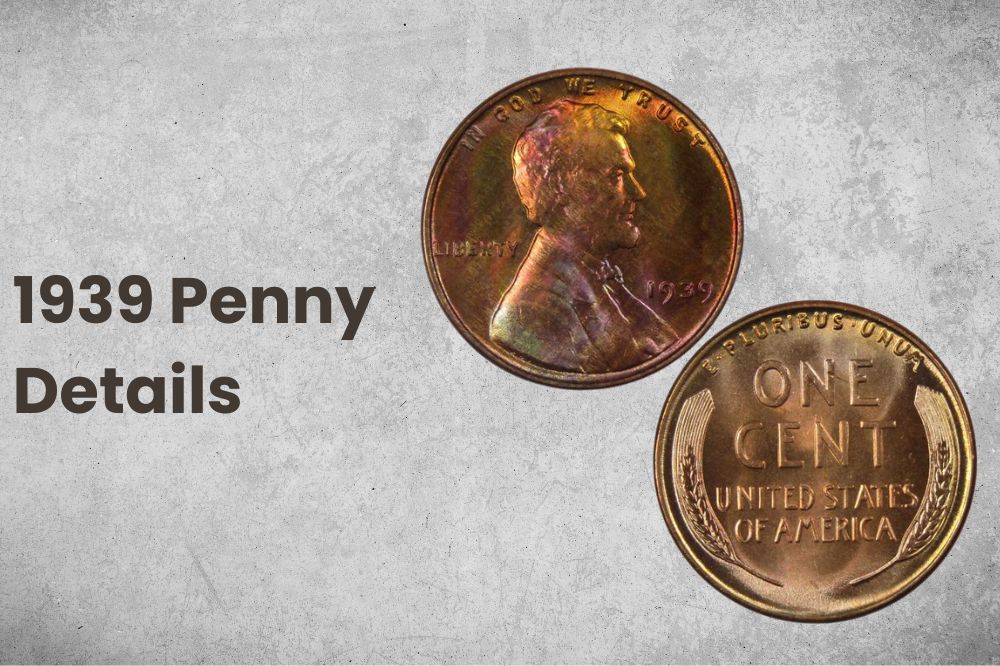
Without knowing the general details of the coin, it may be a challenge to know what makes it special. While all the pennies may look and feel the same, there are a few details that will help you to tell one part from another.
- Category: Lincoln Wheat Pennies
- Mint: Denver, San Francisco, and Philadelphia
- Mintage: 383,709,520
- Obverse designer: Victor D. Brenner
- Reverse designer: Victor D. Brenner
- Composition: 95% copper and 5% tin or zinc alloy
- Edge: Plain
- Weight: 3.11 grams
- Diameter: 19.05 mm
- Thickness: 1 mm
The number of minted coins for the year 1939 is almost 400 million, which is a considerable amount. Also, three branches struck the coin for that year: Philadelphia, San Francisco, and Denver. Philadelphia is the main mint, striking more than 90% of them.
Since the Philly mint typically strikes coins without a mint mark, it means the number of these coins in circulation is abundant. Consequently, their value may not be the same as the rest of the coins. The San Francisco mint struck the second-largest number of pennies for that year.
However, the amount is significantly smaller than that of the Philly mint. San Francisco coins bear an S mint mark, so they may be slightly more valuable than the coins from the former mint. But this depends on the condition of the coin and the collector, as some are more inclined to pay more than others.
The third mint is in Denver, and it struck the lowest number of coins that year. It struck only a little over 15 million coins, which is a small percentage of the coins from the San Francisco mint and only a fraction of the coins from the Philadelphia mint. This is one of the contributing factors to the value of the 1939-D pennies.
As with other pennies of the same series, this coin is made mostly of copper. The rest of it is made from tin or zinc, but the copper composition gives the coin its color. The edge is smooth and the size is the same as the rest of the coins in the series.
Also Read: Top 20 Most Valuable Old Pennies Worth Money (Penny Collection)
1939 Penny Value Chart
This value chart details the selling or buying cost of the penny. The cost may be different on the open market or auction houses. But bear in mind that the penny does not have much value because of its abundance in circulation.
| Mint Mark | Good | Fine | Extremely Fine | Uncirculated |
| 1939 No Mint Mark Penny Value | $0.04 | $0.06 | $0.14 | $2 |
| 1939 ‘D’ Penny Value | $0.04 | $0.16 | $0.56 | $5 |
| 1939 ‘S’ Penny Value | $0.03 | $0.30 | $0.44 | $3 |
The value chart shows that the 1939 penny is worth a little more than the face value. The same is true of the coins with a mint mark. The Denver coins have more promise than the rest of the coins because of their mintage and consequent availability.
Apart from these coins, the Philadelphia mint struck some proof coins. Proof coins are specially minted, and they have special value because of their mirror-like appearance and sharp details. However, not many of them were struck that year, only about 13,000. The result is that the proof coins are quite valuable, although not worth a lot in the general sense.
The coin’s condition and the mint mark add value to it, but these are not the only deciding factors. A collector may decide that they want some specific markers on coins before they can collect them. Other times, errors and unique details increase the value of coins, even when they are not in the best condition.
Grade
Let’s explain what a coin grade is. If you have heard of coin grading, it refers to the condition of the coin at the time you buy or sell it. It is usually the first thing anyone sees, which influences the value they place on the coin before settling for a price.
The best coin condition is mint state + or uncirculated. It means the coin is in a perfect state; in some cases, it is pristine, without any damage. If you find such a coin, it can be worth thousands of dollars. Graders or collectors will decide what it is worth based on the uniqueness of the coin.
But a coin can also be in extra fine condition, which is close to the mint state. Such coins are still worth a lot of money, depending on who is selling or buying, but it is not the same as the former grade. The details are still obvious and the luster is there on a coin in this grade.
However, coins in good condition are not the best in the book. The same is true about coins in fine condition, although this latter grade is slightly better than the former. These coins do not have any discernible details, but the silhouettes of the images are obvious.
The truth is that while coins generally get their value from their grade and available mint mark, a few other factors also add value. For example, unique errors and marks can take the value from tens of dollars to hundreds of dollars.
1939 Penny Value and Varieties Guides
The 1939 penny was struck in three mint branches, and there are distinct differences between them. This section explores each coin type and what value these details may add.
1939 No Mint Mark Penny Value
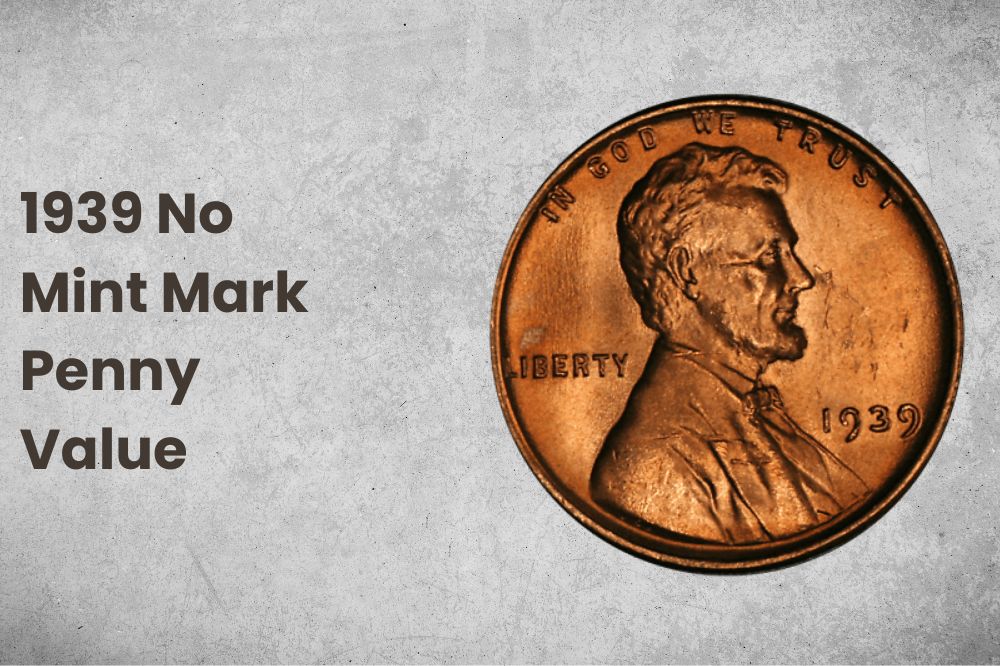
- Type: Lincoln Wheat Pennies
- Edge: Plain
- Mint mark: None
- Minting Location: Philadelphia
- Year of minting: 1939
- Face value: One cent
- $ Price: $0.04 to $2 (or more)
- Quantity produced: 316,466,000
- Designer: Victor D. Brenner
- % Composition: 95% copper and 5% tin and zinc
- Mass: 3.11 grams
- Diameter: 19.05 mm
From the details above, you can see that the Philadelphia mint struck a lot of pennies. This is typical of the main mint, although it is not always the case. The coins do not have any mint marks, but every other detail is the same as the other coins except for errors or markers.
In great condition, the Philly coins can be valuable. If the color is reddish-brown, the coin may attract more value. About a decade ago, a Philly-minted penny in MS 68 sold for about $9,000. A few others sold for about $3,000, so it all comes down to the value.
1939 ‘S’ Penny Value
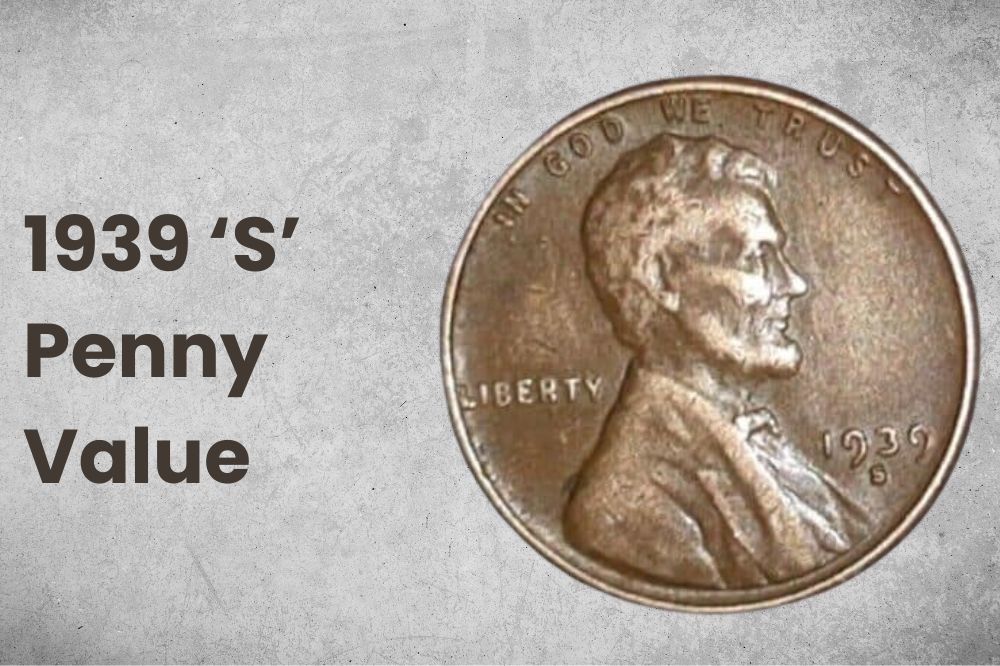
- Type: Lincoln Wheat Pennies
- Edge: Plain
- Mint mark: S
- Minting Location: San Francisco
- Year of minting: 1939
- Face value: One cent
- $ Price: $0.03 to $3 (or more)
- Quantity produced: 52,070,000
- Designer: Victor D. Brenner
- % Composition: 95% copper and 5% tin and zinc
- Mass: 3.11 grams
- Diameter: 19.05 mm
A little over 50 million pennies were minted in San Francisco, which is noticeably fewer than the Philly mint coins. They carry the mint mark on the obverse, which slightly increases the value. Then, the number minted makes it rarer than the Philly coins and more in demand.
You must also remember that the coin’s condition is vital to its value. So, the better the condition is, the more the coin is likely to attract. Not every penny piece minted that year is still in circulation, which significantly increases the value. You may get as much as $140 for an MS coin. An MS 67+ RD penny sold for over $3,000 at an auction a few years ago.
1939 ‘D’ Penny Value
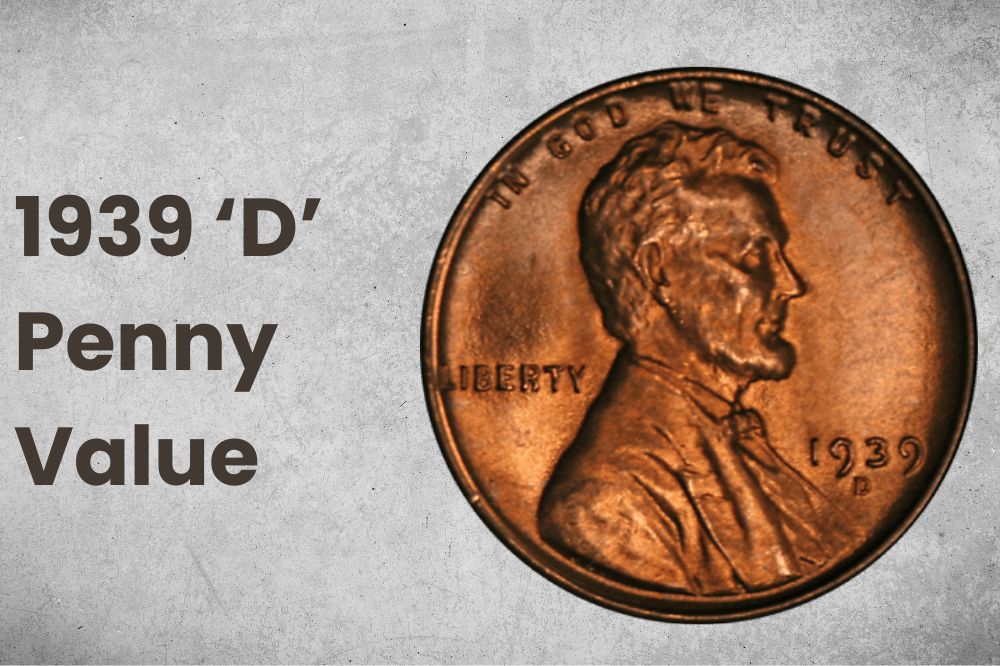
- Type: Lincoln Wheat Pennies
- Edge: Plain
- Mint mark: D
- Minting Location: Denver
- Year of minting: 1939
- Face value: One cent
- $ Price: $0.04 to $5 (or more)
- Quantity produced: 15,160,000
- Designer: Victor D. Brenner
- % Composition: 95% copper and 5% tin and zinc
- Mass: 3.11 grams
- Diameter: 19.05 mm
This is the rarest of the pennies minted in 1939; only a little over 15 million were minted. This number plays a huge role in how much value collectors place on the coin. Couple with the mint mark, the 1939-D penny is the most valuable on the list.
As with the others, the actual worth is with the buyer. It depends on what they want. For some, completing a series is more crucial than getting the best-looking coin. So, finding the required penny is a priority, a factor that makes the collectors price them higher than others.
The most expensive D coin sold for about $11,500, and it was an MS 68 penny. The color and tone of the coin added to its worth because collectors seem to favor reddish-brown coins more than others. In circulated conditions, you may get about $50 for a well-preserved penny.
History of the 1939 Penny
There is always a story behind the old coins we value today, and the 1939 Lincoln penny is no different. President Theodore Roosevelt thought to change the cent and the four gold pieces that were in use at that time. His primary reason was that the U.S. coinage did not have true artistic merit, so he wanted to do something about it.
Following this decision in 1904, the president spoke with the Treasury Secretary at that time to see the possibility of engaging the services of a private artist, and Augustus Saint-Gaudens was hired. The aforementioned coins were already due for a new design without waiting for an act of Congress since they had been circulated with the same design for 25 years.
The first design for the cent was a flying eagle, but it was rejected because an eagle could not be on the cent according to the law. So, that design was used for the double eagle gold piece, which was the $20 coin.
By 1907, the design for the gold pieces was well underway, but the cent was still under debate. The artist was already gravely ill with cancer at this point, so he had to rely on his assistants to produce the designs under minimal supervision.
By February of that year, he presented a design with Liberty for the obverse. The president requested that a Native American war bonnet be added to the design. This was done, but the president instructed that the design be moved to the eagles instead of being used for the cent.
However, Saint-Gaudens died in August of that year, so his assistants continued the work. By 1908, the design for the gold pieces was ready, so the president focused on the cent. At this time, the 100th birthday of the 16th president Abraham Lincoln was drawing close.
There were already souvenirs from private manufacturers to commemorate the occasion, and calls also came from different quarters for a Lincoln coin. Doing this would deviate from the numismatic tradition because, before that tie, there had never been a person on any coinage.
However, the president was positively inclined toward this request, so toward the end of that year, he contracted Victor David Brenner to design the cent. No one knows how Roosevelt chose him, but he sat for the sculptor and liked a Lincoln plaque he did.
Brenner developed the design with Lincoln’s bust and it was approved. By 1909, the cent was ready; it went into production and began circulating the same year.
1939 Penny Grading
We have already talked about how a coin condition can change its value. But the four main conditions can be further divided into grades. The grading scale goes from 70 down to 1, with 1 being the lowest condition and 70 being the best.
A coin in the mint state can be in the range of MS 63 to MS 70. In MS 63, the coin is not as fine as an MS 70 coin. This video explains how to grade old coins for value.
List of 1939 Penny Errors
Some errors are common with the 1939 penny. Let’s look at some of them.
1. 1939 Penny Doubled Die Error
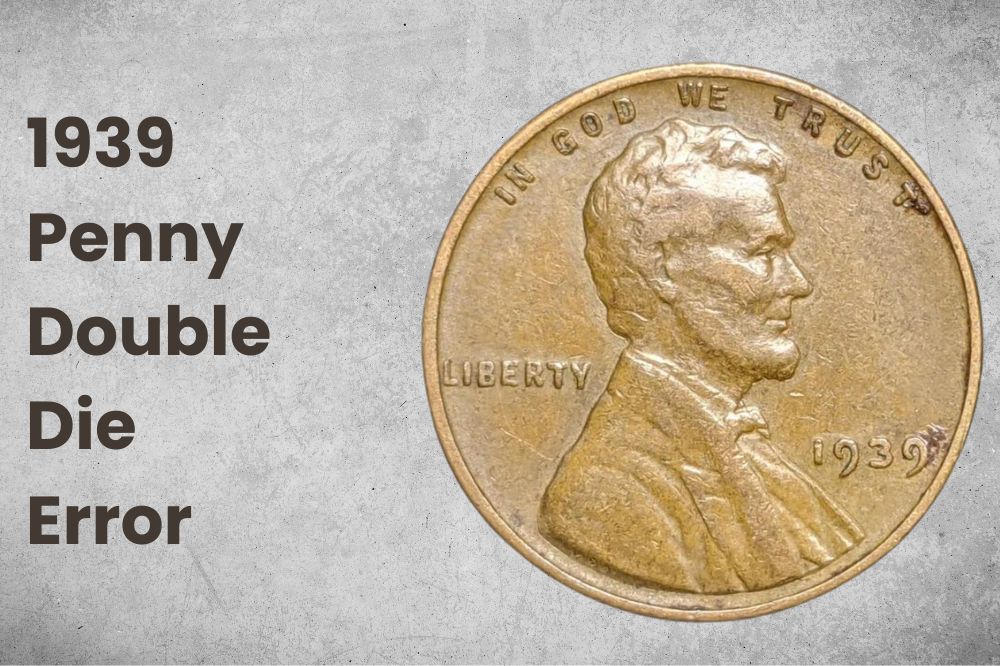
This error refers to striking the planchet at more than one specific angle and producing more than one visible image. Some no-mint mark coins have this error on the date and LIBERTY on the obverse. Also, some 1939-S pennies have a similar error but only on the president’s eye.
2. 1939 Penny BIE Die Error
The BIE error is not common, and it refers to a raised line between the letters B and E in the word LIBERTY. The raised line looks like an I, which changes the look of the word, hence the name BIE. Some coins with the error can go sell for about $10.
3. 1939 Penny Off-center Error
An off-center error refers to the die striking the planchet a little off-center. Some are struck 10% off-center, while others are struck 20% off-center. However, this error only increases the coin value for collectors.
1939 Penny FAQs
Is a 1939 S penny rare?
The 1939-S penny is not rare; it is Abundant on the rarity scale. That means the coin is readily available, especially in worn condition. The coin is not the most valuable in the series, so collectors are not crazy about it.
How much is a 1939 penny worth today?
The penny is worth between $2 and $3, but it depends on the mint mark, coin condition, and the collector. These factors can increase the value, sometimes to hundreds or thousands of dollars.
